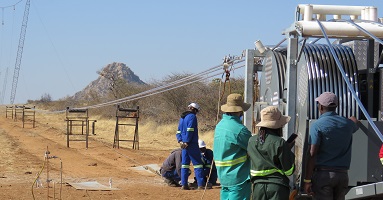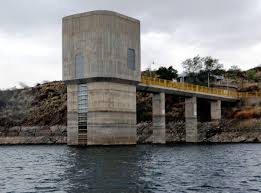
Power utility secures more than N$2 billion funding for major transmission line project

The country has successfully secured funding exceeding N$2 billion for the expansion of its transmission network and the integration of renewable energy into its grid.
On Tuesday, the first-ever World Bank-financed energy project for Namibia, valued at US$138.5 million (equivalent to N$2.6 billion), was approved.
The Transmission Expansion and Energy Storage (TEES) Project aims to enhance the reliability of Namibia’s transmission network and facilitate increased integration of renewable energy into the electricity system.
Structured around three key components, the project includes the development of the second Auas-Kokerboom transmission line, the establishment of a utility-scale Battery Energy Storage System facility, and technical assistance activities to support NamPower in developing bankable renewable energy projects.
NamPower’s Managing Director, Kahenge Haulofu, hailed the approval of the project as a major milestone in the development of the approximately 465 km line. This line will stretch from the Auas transmission station outside Windhoek to the Kokerboom transmission station near Keetmanshoop.
The Auas-Kokerboom 400kV Transmission line will significantly enhance NamPower’s north-south transmission capacity, utilizing efficient 422 series towers and a compaction cross-delta conductor arrangement.
“This investment is strategic and crucial for Namibia’s electricity transmission network,” stated Haulofu.
“Once completed, it will enable NamPower to keep pace with the country’s evolving electricity needs, unlock increased access to Variable Renewable Energy, and facilitate regional electricity trading.”
As part of the TEES Project, a Battery Energy Storage System will be established at the Lithops Substation in the Erongo region. With a capacity of 45MW/90MWh, the BESS will support load centers, particularly large mines, and store excess energy from upcoming Solar Photovoltaic power plants.
The expansion of Namibia’s electricity network is vital to meet current and future national load requirements, including the needs of a growing population and economy. It aligns with Namibia’s National Energy Policy and Renewable Energy Policy, aiming for 85% self-sufficiency and sourcing 70% of energy needs from renewable sources.
Satu Kahkonen, World Bank Country Director for Namibia, lauded Namibia’s commitment to a greener, more sustainable future and expressed the World Bank’s delight in supporting the country’s energy expansion efforts.
This project, she noted, aligns with Namibia’s Second Harambee Prosperity Plan and will bolster NamPower’s capacity to develop future renewable energy projects.










































